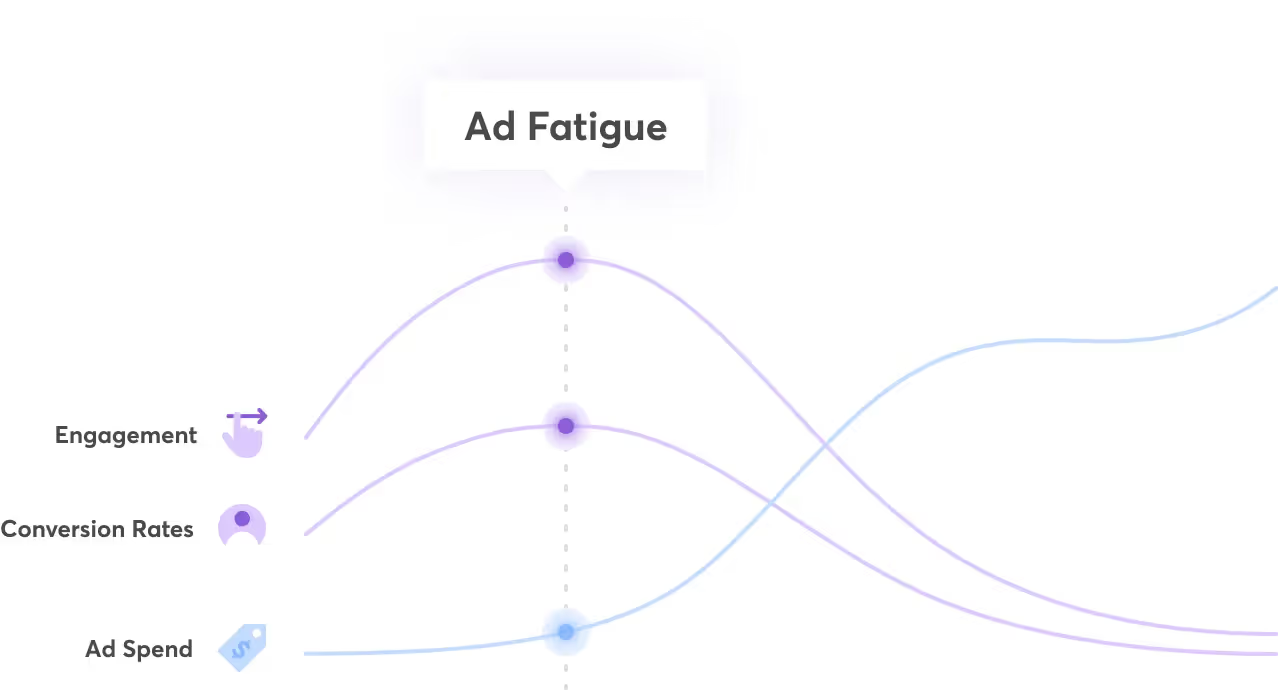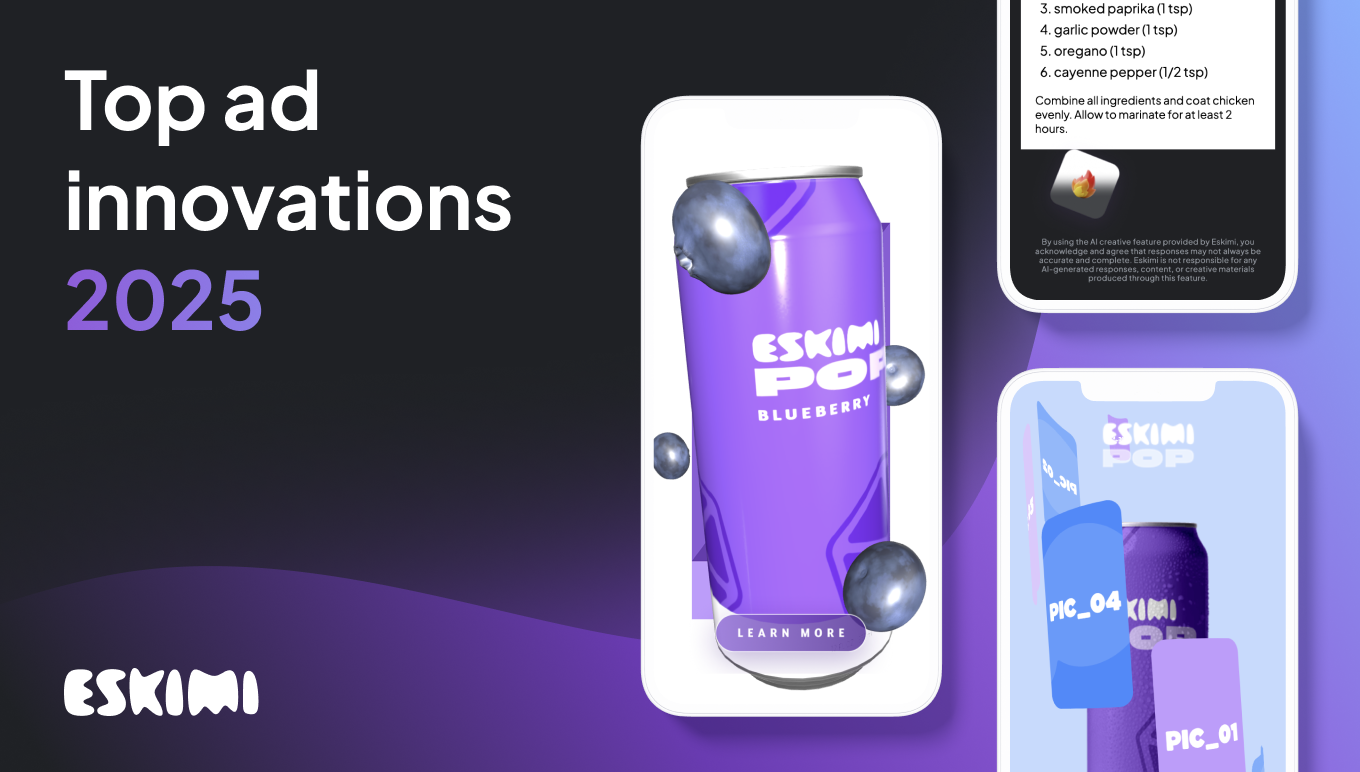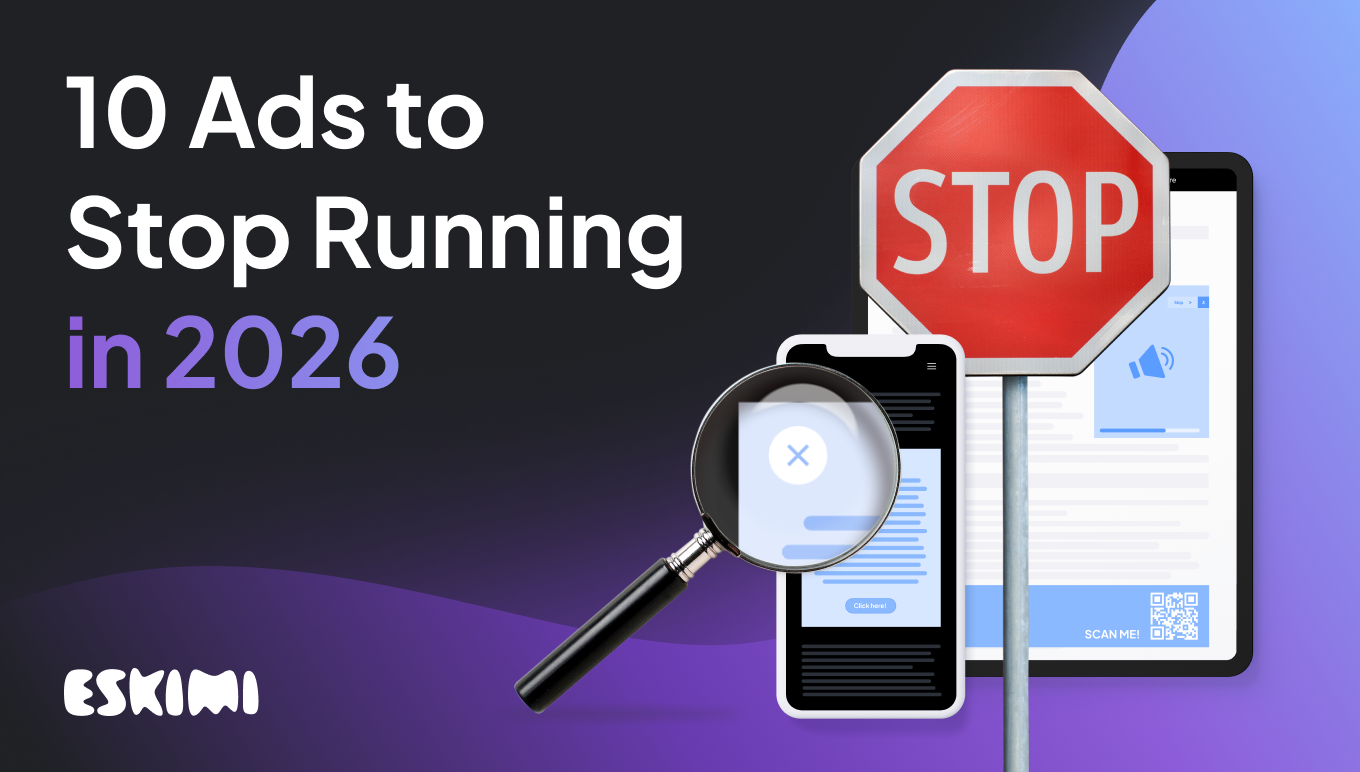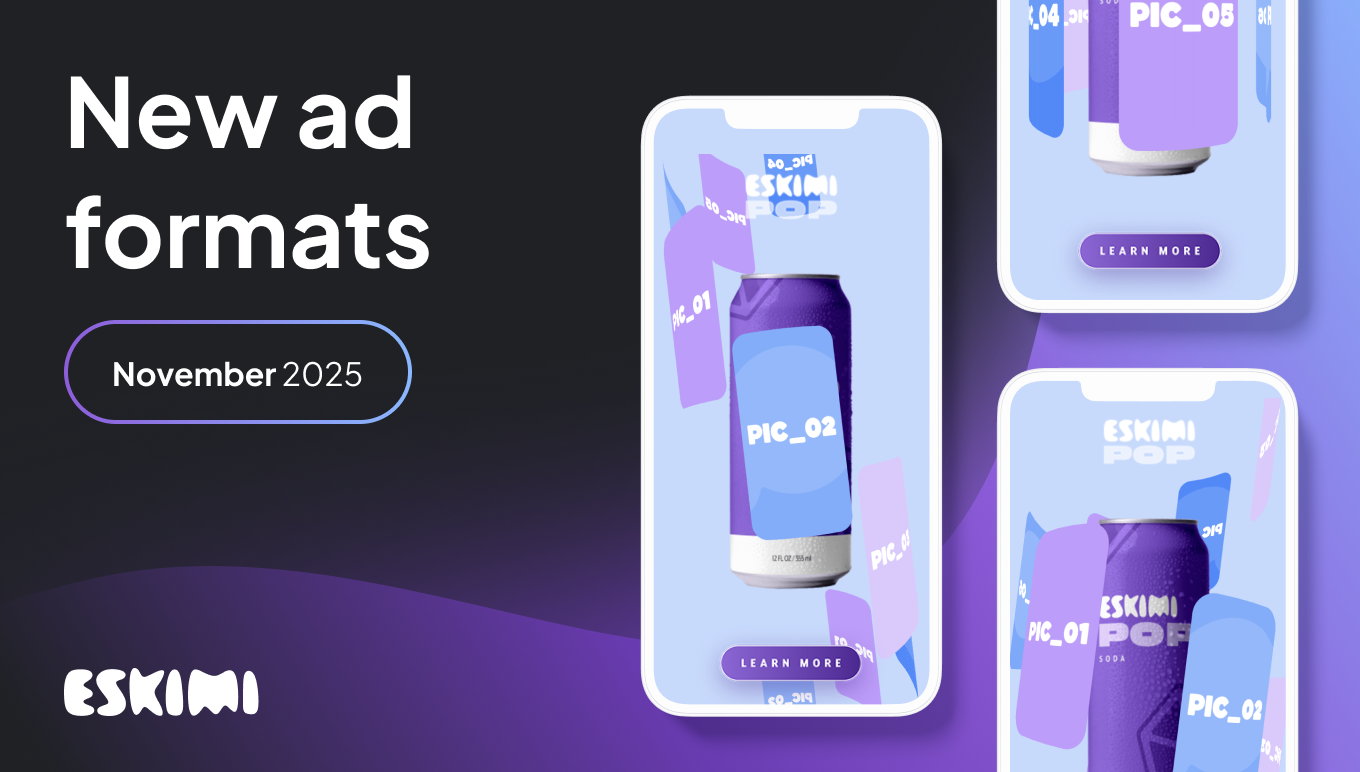Ad Fatigue: Slaying the Silent ROI Assassin

In the dynamic tapestry of digital advertising, few phenomena have as profound an impact as ad fatigue. The meteoric rise of programmatic advertising has reshaped marketing strategies, but with this rise lies a shadowy underbelly: ads lose their zest, audiences grow indifferent, and what was once novel and compelling becomes mundane.
Ad fatigue is a silent assassin—it stealthily erodes the Return on Investment (ROI), making even the most meticulously crafted campaigns fall flat. It doesn’t appear in modern stats and metrics, and it is easy to let it slide in assessing a campaign’s success.
As we navigate the complexities of today's advertising landscape, recognizing and promptly addressing ad fatigue isn't just advisable—it's imperative for sustained success and engagement.
What is ad fatigue? Definition and characteristics
Ad fatigue is when a target audience becomes over-familiar with an advertisement, leading to diminishing returns on engagement, click-through rates, and conversion. In simpler terms, the more frequently your audience sees the same ad, the less effective it becomes. Think of it as hearing the same song played on repeat. No matter how much you loved it initially, it loses its charm over time. Here are some defining ad fatigue characteristics:
- Decreased engagement: The most evident symptom of ad fatigue is a notable drop in engagement metrics. An ad that once garnered a substantial number of clicks, likes, or shares might start to see a decline.
- Reduced conversion rates: As users grow accustomed to seeing the same promotional material, they become less likely to act upon it. This leads to a decrease in desired actions like sign-ups or purchases.
- Increased ad spend: Advertisers might witness a rise in their cost per acquisition (CPA) or cost per click (CPC). As an ad's efficiency wanes, more money is spent to achieve the same results.

Ad fatigue is not something marketers came up with. It’s a reality backed up by numbers. In a recent HubSpot research, respondents had some interesting things to say:
- 91% of respondents expressed that ads are more intrusive today compared to the past couple of years
- 79% also feel that they’re being tracked due to retargeted ads
While those numbers are imperative in understanding the problem, what’s interesting is to study the findings that carve the path to its solution. The same research showed that:
- 83% of people agreed that not all ads are bad, but they want to filter out the really obnoxious ones
- 77% decided they prefer to ad filter rather than completely ad block
Before we expand on this idea, though, let’s get more context on the beginning and evolution of ad fatigue.
Historical context: How the concept has evolved over the last two decades
The seeds of ad fatigue were sown in the early days of digital advertising. However, two decades ago, the online landscape was far less saturated. As the 2000s progressed, brands and businesses began to realize the immense potential of online platforms, and as a result, digital real estate became crowded.
In the earlier days, the novelty of digital ads was enough to capture attention. Banner ads, pop-ups, and even rudimentary video ads were effective largely because they were new and relatively rare.
Think of it as the first-mover advantage. If you’re at a beach with just one beach bar, their water, coffee, and sandwiches will taste heavenly as they are the default option. If more beach bars open on the beach, you have a choice, and your need is no longer as evident as before. Taking this analogy from the beach to the advertising world, ad repetition became rampant, with advertisers vying for the same audience’s attention.
The introduction and rise of social media platforms in the mid-2000s added another dimension. Platforms like Facebook, Instagram, and Twitter provided brands with more direct ways to reach their audiences. Still, they also introduced algorithmic feeds, meaning popular or sponsored content would be shown more frequently. Social media platforms were initially meant for creative expression, communication and storytelling but quickly became a sponsored content playground.
Why ad fatigue matters: The impact on return on investment (ROI)
Ad fatigue is not merely a theoretical concern—it has very real and tangible repercussions on a company's bottom line.
Every time an advertisement is served but not interacted with, there's a lost opportunity. Yet, businesses continue to pay for these impressions or clicks, leading to an inflated advertising spend without the requisite return.
Effects on brand perception and consumer sentiment
Beyond the immediate financial implications, ad fatigue can severely tarnish a brand's reputation. When consumers are constantly bombarded with repetitive, low-quality content, they perceive the brand as intrusive, unimaginative, or even desperate.
In an attempt to connect with their target audience, businesses might result in overexposure, shifting the narrative from a brand being seen as a trusted provider to a nagging entity. Considering how challenging and time-consuming it is to build brand loyalty, damaging it goes beyond an unsuccessful ad campaign.
Moreover, negative perceptions can spread like wildfire in the age of social media. A single tweet or a meme about an overplayed ad can resonate with thousands, if not millions, of individuals who share the same sentiment. This ripple effect can quickly amplify negative feelings towards a brand, making a recovery costly and sometimes almost impossible.
The correlation between increased ad spend and decreased engagement
One might believe that increasing ad spend casts a wider net, thereby capturing a larger audience. However, the opposite is often true when ads are not built correctly. Investing more heavily in the same ad content and strategies can quickly reach a point of diminishing returns.
Oftentimes, advertisers seem perplexed as pumping more money into their campaigns translates to plummeting engagement rates. How do you deal with such a scenario?
First, it’s crucial to recognize the signs of ad fatigue, which brings us to the next part of the article.
Diagnosing ad fatigue: Key indicators and symptoms
How are you supposed to treat an ailment when you have no symptoms, no signs? As with our own individual health, some diseases knock loudly on our door, whereas others slip the crack under the door, and we never realize until it’s too late. In either case, the best way to prevent anything from happening is to perform regular checks and exams to assess health status.
Here’s what you need to keep an eye on:

The role of analytics and ad performance tools
Now, how can we pinpoint ad fatigue early and effectively? The answer lies in leveraging analytics and ad performance tools.
- Real-time monitoring: The most significant advantage of today’s ad platforms is their real-time data. Marketers can monitor campaigns on the go, allowing for swift identification of any signs of ad fatigue.
- Segmentation and frequency reports: Analytics tools offer insights into how often particular audience segments see your ads (ad frequency). High frequencies, especially over short periods, can contribute to ad fatigue.
- A/B testing: Regularly testing multiple ad variations against each other helps marketers identify which versions resonate the most with the audience. Over time, if one variant starts underperforming consistently, it’s a sign that it needs to be eliminated from your campaign.
Common triggers for ad fatigue
Marketers and advertisers must recognize the triggers that cause this issue and devise strategies to combat it. Here, we delve into some of the most common triggers for ad fatigue.
- Overall ad exposure: With the avalanche of ads consumers face today—across TV, digital platforms, and even on the streets—the collective volume can lead to sensory overload. The result? Even the most well-crafted campaigns risk becoming white noise.
- Repetitive messaging: Repetition is a powerful yet dangerous tool in advertising. Continually bombarding audiences with the same message can quickly breed disinterest or even annoyance. Over time, the once-fresh advertisement becomes white noise. At first, it's catchy. By the hundredth time, it's maddening.
- Lack of ad variation: Closely related to repetitive messaging is the pitfall of offering little to no variation in ad creatives and displaying the same visuals, whether images or videos, regardless of platform or audience subset, is guaranteed to induce ad fatigue. Audiences crave novelty. Serving up different ad formats, designs, or copy can keep the content fresh and engaging.
- Over-targeting the same audience segments: Modern advertising tools offer the precision to target hyper-specific audience segments. While this can be immensely powerful, it becomes a double-edged sword overused.
- Cultural shifts: The zeitgeist is ever-evolving, influenced by seasonal events, cultural shifts, and global happenings. What was relevant and engaging two months ago may not resonate today. Advertisers who don’t pivot or adapt their messaging to the shifting cultural or seasonal landscape risk seeming outdated or insensitive.
Strategies to prevent and overcome ad fatigue
So, what's the cure? How do you treat ad fatigue? Tip: the answer is not “rest” or “stop producing ads.” Let’s dive in.

Creative rotation
Just like in storytelling, repeating the same narrative or using the same visuals can turn your audience off.
- Importance of varied ad creatives: Your audience is diverse and multifaceted. By delivering varied creatives, you cater to their tastes and prevent content from growing stale. Ensuring your creative arsenal is continuously updated, innovative, and aligned with your brand’s messaging is essential.
- Tips for refreshing ad designs and copy: Keep an eye on current design trends and understand your audience's evolving preferences. A/B testing new designs against older ones can help identify which resonates better.
Audience segmentation and rotation
In the era of personalization, "one-size-fits-all" doesn't cut it.
- Broadening targeting criteria: While hyper-targeting can be effective, it can also lead to rapid ad fatigue, especially with smaller audience segments. Periodically revisiting and broadening your targeting criteria can be helpful.
- Diversifying audience segments: Instead of continuously targeting the same segment, consider rotating between different audience personas. This ensures varied audience exposure and reduces the risk of overexposing one segment.
Ad channel diversification
Don't put all your eggs in one basket.
- Expanding beyond saturated platforms: While giants like Facebook and Google dominate the ad scene, saturation on these platforms can lead to higher costs and reduced engagement. Diversify by tapping into other platforms or niche-specific networks that cater to your audience.
- Exploring emerging ad channels: Stay ahead of the curve by investing in emerging platforms. Being an early adopter can provide a competitive edge, whether it’s the newest social media sensation or an innovative ad network.
Leveraging dynamic content
Ad personalization is no longer a luxury; it's a necessity.
- Personalization and rich media: By leveraging user data and AI, advertisers can deliver personalized ad experiences in real-time. Dynamic creative optimization tools can adjust ads based on user behaviour, location, and other factors, ensuring relevance and reducing fatigue. Rich media ads can deliver more targeted results.
Feedback loops and continuous learning
Ad creation isn't a one-way street.
- Engaging with audiences for feedback: Encourage audience feedback on your ads. This builds trust and engagement and provides invaluable insights into what's working and what's not.
- Using insights to guide strategy: Dive deep into analytics. Observe drop-offs in engagement, monitor CTRs, and be vigilant about rising costs. These insights will guide your strategy, helping pivot when needed and ensuring ad fatigue is kept at bay.
How to avoid ad fatigue: Key takeaways and best practices
Ad fatigue, while subtle, can be a formidable adversary. Remember, resting on past successes is not an option in the dynamic realm of programmatic advertising. Continuous evolution and adaptability are the keys to ensuring your ads remain fresh, engaging, and effective. Let’s recap.
- Understanding ad fatigue: At its core, ad fatigue happens when your target audience sees your ad too many times, causing them to become desensitized or irritated. This results in declining click-through rates (CTR), reduced conversion, and a lower ROI.
- Continuous vigilance is paramount: Battling ad fatigue isn't a one-time fix; it's a continuous endeavour. The digital advertising landscape is ever-changing, and consumer behaviours shift in tandem. Regularly monitoring campaign metrics, especially CTR and engagement rates, can give early warning signs of fatigue setting in.
- Adapt and rotate creative assets: One of the most effective ways to combat ad fatigue is to rotate ad creatives regularly. This doesn't mean a complete overhaul, but subtle changes like tweaking the ad copy, changing images, or adjusting the call-to-action can bring new life into a campaign.
- Audience segmentation: Not all audience segments will react the same way to your ads. Segmenting audiences based on behaviour, demographics, or purchase history allows for more personalized ad delivery, reducing the likelihood of fatigue.
- Agility: The digital advertising ecosystem rewards agility. With new platforms, technologies, and consumer behaviours emerging constantly, the ability to swiftly pivot and adapt your strategies is crucial. Gone are the days when a single ad could run indefinitely without changes.
- Test, test, test: Regular A/B testing of ad creatives can provide invaluable insights into what's resonating with your audience and what’s not. This continuous feedback loop ensures that you're always putting forward the best version of your ad.
- Stay updated: The world of advertising is not static. New platforms, ad formats, and technologies are always on the horizon. Staying updated ensures that you're combating ad fatigue and leveraging the latest tools and strategies to maximize ROI.
Level Up Your Advertising with Eskimi
- Reach 96% of Open Web
- 2,500+ Targeting Options
- 100% Managed or Self-Service
- In-House Creative Studio Team
- Display, Video, In-Game & CTV
- #1 Rated DSP on G2





